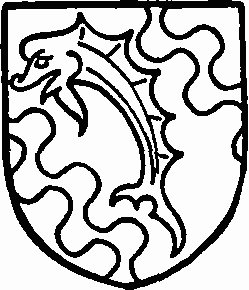Manor of the Chapel of St. Macutes
Information from Victoria County History, Vol. II, 1908
Another supposed manor appears for the first time in 1623 under the name of the manor of THE CHAPEL OF SAINT MACUTES (alias St. Machutus, alias St. Makes, alias St. Marks). This estate owed its origin to the free chapel of St. Machutus in Haynes, said to have been given by Robert de Albini in the twelfth century to Beaulieu Priory, in the parish of Clophill, a cell to the abbey of St. Albans. Although the priory had to serve the chapel and took the profits of the lands, the advowson appears to have been retained by Robert de Albini and followed a descent which is traced under the advowson of the church. On the occasion of the transfer of Beaulieu Priory to St. Albans Abbey without the king's consent in 1435, an inquisition was taken, in which it was stated that Aumary of St. Amand, a descendant of Robert de Albini, had shortly after 1279 given a carucate of land in Wilshamstead to support one monk in the chapel of St. Machutus, who should celebrate mass there three days a week for the souls of Aumary and his ancestors. During the eight years prior to this inquisition the abbot had ceased to provide a monk and had taken all the profits of the carucate which was worth £4. The same abbot John of Wheathampstead undertook many expensive works on the lands belonging to St. Albans, and among others caused five barns to be built at St. Machutus in 1438, one of which, 48 ft. in length, cost £10.
The chapel and lands came to the crown at the Dissolution, and were afterwards bestowed by Queen Mary upon George Rotherham of Farley and Roger Barber of Luton, and were conveyed by them, towards the end of the same year, to John Ventris of Campton, to hold from the queen in chief. John Ventris died seised of the manor in 1558 and was succeeded by his second son Henry, the elder, William, dying a few weeks after his father. The lands and buildings were rented from the Ventris family by Edmund Lord Bray, and it was stated in 1561 that the lease had yet thirteen or fourteen years to run. It is stated that George Rotherham died seised of the lands and chapel in 1594, and shortly before his death he brought an action against Anne Rotherham, widow, and Isaac Rotherham, from whom he claimed the lands and chapel by descent from his grandfather, George Rotherham, to whom they were granted in 1554; none of the Rotherhams, however, had any claim to the lands and chapel, as they were alienated by the grantee George Rotherham to John Ventris, in whose family they continued for many years.

Ventris. Azure a dolphin swimming between two waved bends argent.
Henry Ventris died in 1564, and left as his heir a son Francis, then only a year old. He afterwards became Sir Francis Ventris, and in 1623 conveyed the chapel and lands, by the title of the manor, to Robert Morgan of London, for the purpose of a settlement on his second son Charles. However, on the death of Sir Francis in 1627, his eldest son Francis entered into the premises, and on his death without issue in 1631 his brother Charles inherited the manor. Some time between 1657 and 1666, the manor was alienated to the Luke family, who had acquired Haynes manor in 1622.
The manor passed from the family of Luke to the Lords Carteret, its descent being identical with that of Haynes manor from the date of the transfer to the Lukes. The last mention of it occurs in 1795, when Henry Frederick, Lord Carteret, owned it, the absence of all later mention of it doubtless indicates that it was absorbed in Haynes manor; the name however survives in a wood known as St. Macute's Wood.